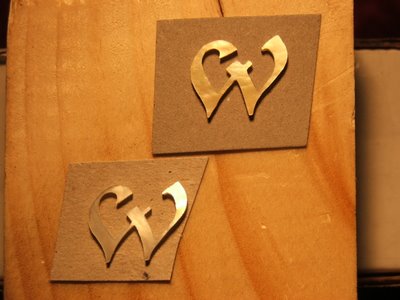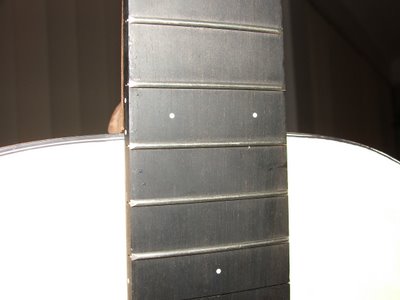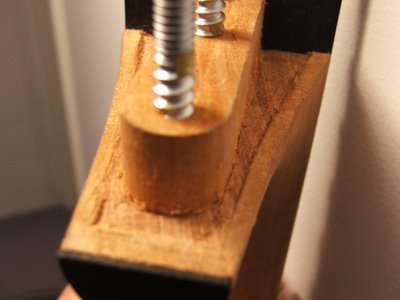What have I done? Only time will tell. I may have just ruined the appearance of my guitar, then again it may come out okay. I've added a few more photos of this step, just to give a better idea of what I did.
I started out by super gluing the pearl in place and then used a craft knife to trace around the outside, leaving me with an outline.
It was during this process that I dropped the inlay on the ground and it shattered into two.... and my blood pressure started to climb.

Then it all went totally pair shaped. The edges of the pearl were not square and although I spent ages, taking my time, working the edges out, I still managed to stuff it up, taking away wood in the wrong places.

Needless to say, my blood was beginning to boil.

Not being able to take a backwards step, I was left with only one option. I got the sandpaper out and rubbed down scraps left over from the overlay and then mixed some clear expoxy and tinted it with the dust.

The plan is that when I rub it back tomorrow, it'll be perfect and you'll never be able to notice that the job was completed by a mere amateur.
Ten minutes after the last photo I thought to myself, "I should have glued that down, I hope the expoxy holds it in place"
Time taken : 2.5 hours
Tools used : craft knife, super glue, epoxy, sandpaper
AU$'s spent : Nil





























